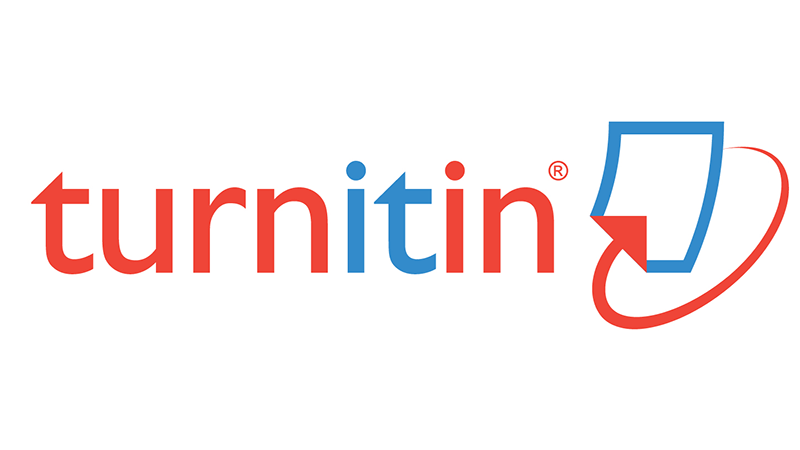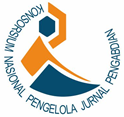PEMBANGUNAN SIRKUIT TEKNOLOGI SELF BALANCING SMART SCOOTER SEBAGAI WAHANA SEHAT DI AREA PERKEMAHAN BEDENGAN
Abstract
Abstrak: Bidang pariwisata di Indonesia kini menjadi salah satu andalan pemeritah untuk menghasilkan devisa negara. Melimpahnya kekayaan alam yang dimiliki membuat setiap daerah di Jawa Timur mulai berkembang pesat dan menunjukan keunggulannya di tiap-tiap sektor. Terutama banyaknya potensi wisata alam yang ada di Kabupaten Malang Jawa Timur yang kini sudah mulai menampakkan eksistensinya hingga mampu menarik wisatawan nasional maupun internasional. Tujuan Pengabdian kepada Masyarakat ini adalah untuk mengembangkan teknologi Self Balancing Smart Scooter sebagai wahana wisata sehat untuk menambah daya tarik pengunjung witasawan. Teknologi Self Balancing Smart Scooter merupakan sebuah skuter roda dua bertenaga baterai. Kegiatan ini bertempat di Jl. Raya Selokerto, Godehan, Selorejo, Kec. Dau, Malang, Jawa Timur. Peserta berjumlah 25 orang dari mitra, masyarakat Desa Selorejo, dan Karangtaruna yang dilakukan selama tiga bulan. Hasil kegiatan meliputi: 1) perancangan desain, pembangunan, uji coba, hingga pembuatan sirkuit teknologi self balancing smart scooter, pelatihan perawatan teknologi self balancing smart scooter, serta evaluasi pasca kegiatan; 2) sirkuit teknologi Self Balancing Smart Scooter yang telah dibangun mampu meningkatkan pemasukan daerah; dan 3) sirkuit teknologi Self Balancing Smart Scooter yang telah dibangun mampu meningkatkan jumlah kunjungan wisatawan.
Abstract: The tourism sector in Indonesia has now become one of the mainstays of the government to generate foreign exchange. The abundance of natural resources owned has made every region in East Java begin to develop rapidly and show its superiority in each sector. Especially the large number of natural tourism potentials in Malang Regency, East Java, which are now starting to show their existence so that they are able to attract national and international tourists. The purpose of this Community Service is to develop Self Balancing Smart Scooter technology as a vehicle for healthy tourism to increase the attractiveness of female visitors. Self Balancing Smart Scooter Technology is a battery powered two-wheeled scooter. This activity takes place at Jl. Raya Selokerto, Godehan, Selorejo, Kec. Dau, Malang, East Java. Participants totaled 25 people from partners, the people of Selorejo Village, and Karangtaruna which carried out for three months. The results of the activities include: 1) designing, building, testing, to manufacturing smart scooter self balancing technology circuits, training on maintenance of self balancing smart scooter technology, and post-activity evaluation; 2) Self Balancing Smart Scooter technology circuits that have been built are able to increase regional income; and 3) the Self Balancing Smart Scooter technology circuit that has been built is able to increase the number of tourist arrivals. 2) Self Balancing Smart Scooter technology circuits that have been built are able to increase regional income; and 3) the Self Balancing Smart Scooter technology circuit that has been built is able to increase the number of tourist arrivals. 2) Self Balancing Smart Scooter technology circuits that have been built are able to increase regional income; and 3) the Self Balancing Smart Scooter technology circuit that has been built is able to increase the number of tourist arrivals.
Keywords
Full Text:
PDFReferences
Antara, M., & Sumarniasih, M. S. (2017). Role of Tourism in Economy of Bali and Indonesia. Journal of Tourism and Hospitality Management, 5(2). doi: 10.15640/jthm.v5n2a4
Bagyo, Y., Kustanto, A., Hariadi, S., & Ratnasari, S. (2018). Peranan Perguruan Tinggi dalam Mewujudkan Desa Wisata Petik Jeruk Selorejo-Kabupaten Malang. Jurnal Abdi Masyarakat, 2. doi: 10.30737/jaim.v2i1.239
BPS. (2019). Jumlah kunjungan wisman ke Indonesia Desember 2019 mencapai 1,38 juta kunjungan. Jakarta, Indonesia: Badan Pusat Statistik. Diambil dari Badan Pusat Statistik website: https://www.bps.go.id/pressrelease/2020/02/03/1711/jumlah-kunjungan-wisman-ke-indonesia-desember-2019-mencapai-1-38-juta-kunjungan-.html
Broton, K. M. (2019). Rethinking the Cooling Out Hypothesis for the 21st Century: The Impact of Financial Aid on Students ’ Educational Goals. Community College Review, 47(1), 79–104. doi: 10.1177/0091552118820449
Budi, S. A., Muchsin, S., & Sekarsari, R. W. (2020). Dampak Sosial Ekonomi Pengembangan Kawasan Destinasi Agrowisata Petik Jeruk (Studi Kasus di Desa Selorejo Kecamatan Dau Kabupaten Malang). Respon Publik, 14(5), 48–54.
Cahyono, B. N., Sumardi, S., & Setiyono, B. (2013). Self-Balancing Scooter Menggunakan Metode Kendali Proporsional Integral Derivatif. Transmisi, 15(4), 164–169.
Cai, W., Richter, S., & McKenna, B. (2019). Progress on Technology Use in Tourism. Journal of Hospitality and Tourism Technology, 10. doi: 10.1108/JHTT-07-2018-0068
Haan, J. de. (2018, Maret 22). The Indonesian Tourism Industry: A Bright Future and Opportunities for Australia. Diambil 26 November 2020, dari Future Directions International website: https://www.futuredirections.org.au/publication/indonesian-tourism-industry-bright-future-opportunities-australia/
Henritius, E., Löfström, E., & Hannula, M. S. (2019). University students’ emotions in virtual learning: A review of empirical research in the 21st century. British Journal of Educational Technology, 50(1), 80–100. doi: 10.1111/bjet.12699
Hu, J., Hu, J., Liu, H., Chen, Y., & Qin, J. (2018). Strategic planning and the stratification of Chinese higher education institutions International Journal of Educational Development Strategic planning and the strati fi cation of Chinese higher education institutions. International Journal of Educational Development, (May). doi: 10.1016/j.ijedudev.2017.03.003
Khlaisang, J., & Songkram, N. (2019). Designing a Virtual Learning Environment System for Teaching Twenty-First Century Skills to Higher Education Students in ASEAN. Technology, Knowledge and Learning, 24(1), 41–63. doi: 10.1007/s10758-017-9310-7
Kiper, T. (2013). Role of Ecotourism in Sustainable Development. Dalam M. Ozyavuz (Ed.), Advances in Landscape Architecture. InTech. doi: 10.5772/55749
Kişi, N. (2019). A Strategic Approach to Sustainable Tourism Development Using the A’WOT Hybrid Method: A Case Study of Zonguldak, Turkey. Sustainability, 11(4), 964. doi: 10.3390/su11040964
Pai, C.-K., Liu, Y., Kang, S., & Dai, A. (2020). The Role of Perceived Smart Tourism Technology Experience for Tourist Satisfaction, Happiness and Revisit Intention. Sustainability, 12(16), 6592. doi: 10.3390/su12166592
Thoreau, R. (2015). The impact of mobility scooters on their users. Does their usage help or hinder?: A state of the art review. Journal of Transport & Health, 2(2), 269–275. doi: 10.1016/j.jth.2015.03.005
Zhang, B., & Wu, G. (2019). Design of two-wheel self-balancing vehicle based on visual identification. EURASIP Journal on Image and Video Processing, 2019(1), 34. doi: 10.1186/s13640-019-0434-7
DOI: http://dx.doi.org/10.17977/um078v2i42020p347-356
Refbacks
- There are currently no refbacks.
Email: jgp@um.ac.id
View JGP's Stats
This work is licensed under a Creative Commons Attribution-NoDerivatives 4.0 International License.
Index by:
 Jurnal Graha Pengabdian
Jurnal Graha Pengabdian






